Are you interested in how to design spaces in your native garden?
One of the key principles in garden design is the use of spaces, or voids. These are as important as the plants in between! Here are some tips in how to achieve that sense of space in a native garden.
Defining space in the garden
Space can be defined as the distance between two objects. In a garden it is often related to our eye level – it can be simply the distance between ourselves and the back fence or the nearest screening shrub.
So space in our gardens is often the distance between fences and the house, between garden walls and houses, across the lawn etc.

When thinking how to design spaces in your native garden, there are some elements to consider. We define the spaces in our gardens by what we grow in them and the structures around them. The size, arrangement and what we use to define our spaces will set how our gardens feel and look.
Ask yourself what spaces you need in the garden, e.g. do you need room for the children to kick footballs or to throw basketballs! Do you need sitting areas, shrub areas, woodland, tall shrub, lawns etc?
Types of garden spaces
There are 5 types of spaces:
1. Practical spaces
- Working areas e.g. areas for compost bins, rubbish
- Water tanks
- Clothes lines
- Car spaces
- Playing areas
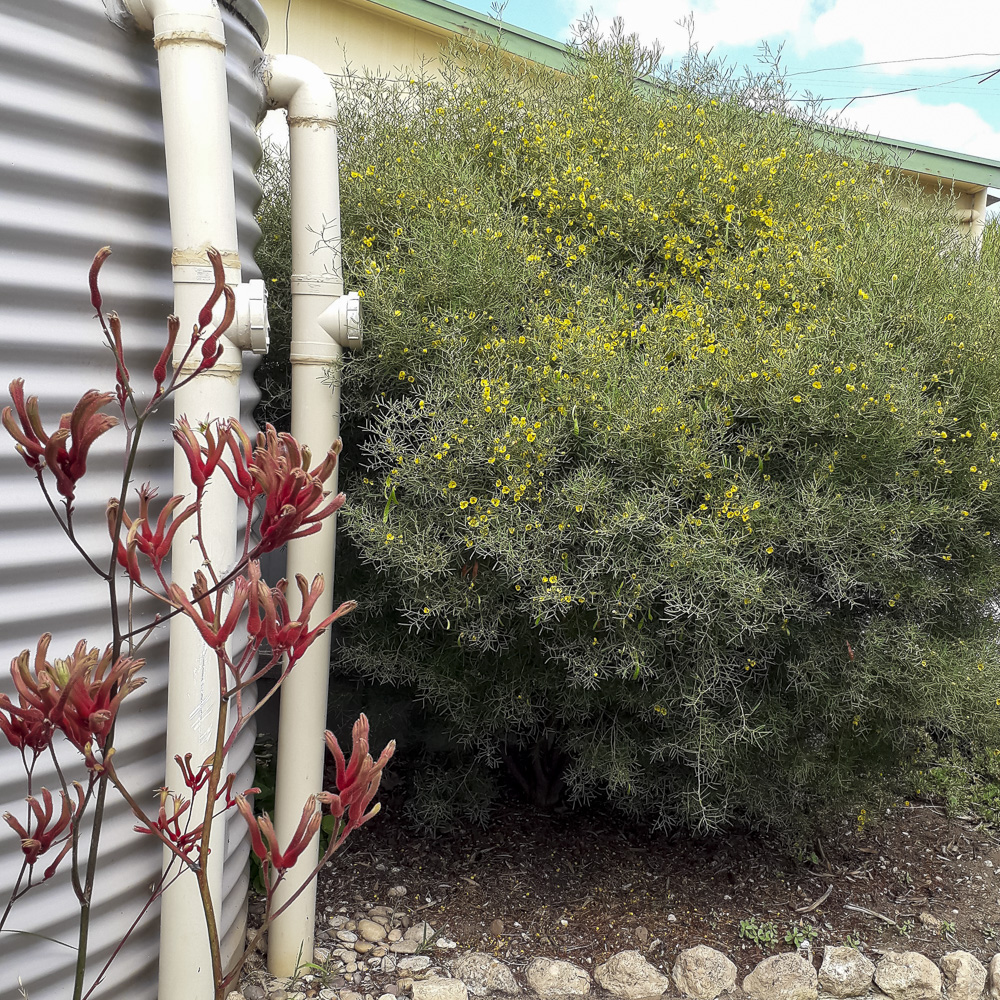
Ensure space is allocated for the utility areas. Bartholomeusz garden, Moonta Bay, by Bartholomeusz
2. Intimate spaces
Smaller spaces where people can meet to talk, work, relax, have coffee etc.
These spaces consist of paving protected by vegetation, often screening shrubs and trees.
These areas need shade to give protection against the sun.

3. Wide open spaces
Where one can feel expansive.
Screening vegetation is generally at a distance with a lawn in the middle. This results in an expansive feel to the garden.
However, appropriately sized shrubs will give the same effect without lawns .
These open spaces are sometimes called vistas. They occur where the long views lead to a feature like a pool, statue, or a special plant.
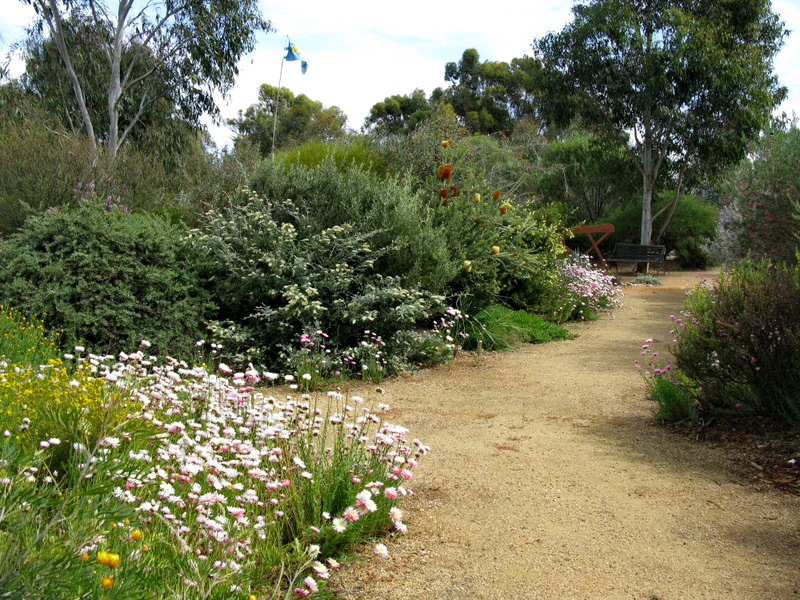
4. Combination of intimate and wide open spaces
We can combine these two effects in order to achieve intimate spaces also with a wide open feel on one side.
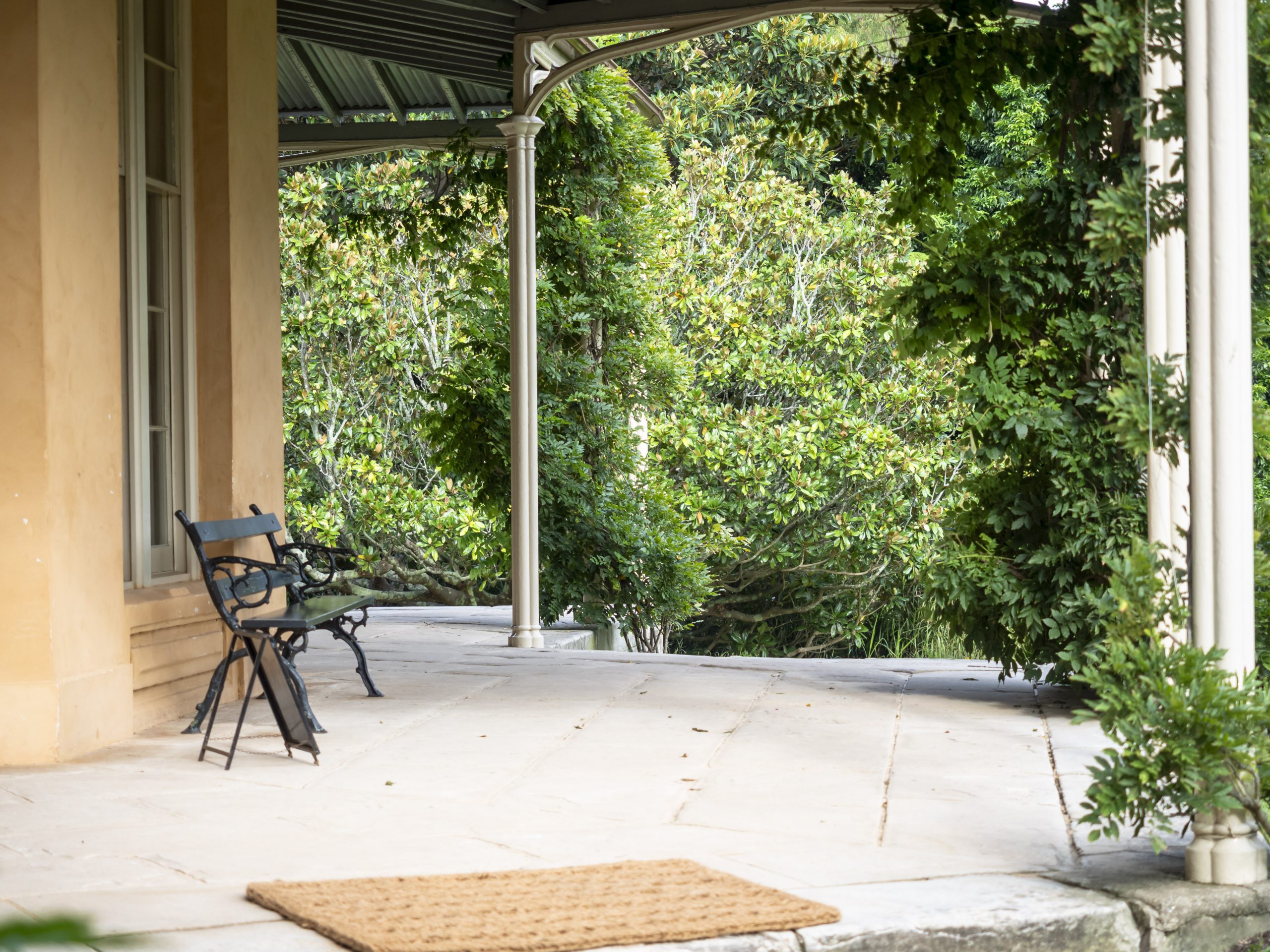
5. Overhead spaces
Mostly created by using trees but also by pergolas etc.
These are very important for shade but also to give a garden a three dimensional feel.
They help to make a space more intimate by enclosing an area and can be combined into intimate spaces and also wide open spaces.
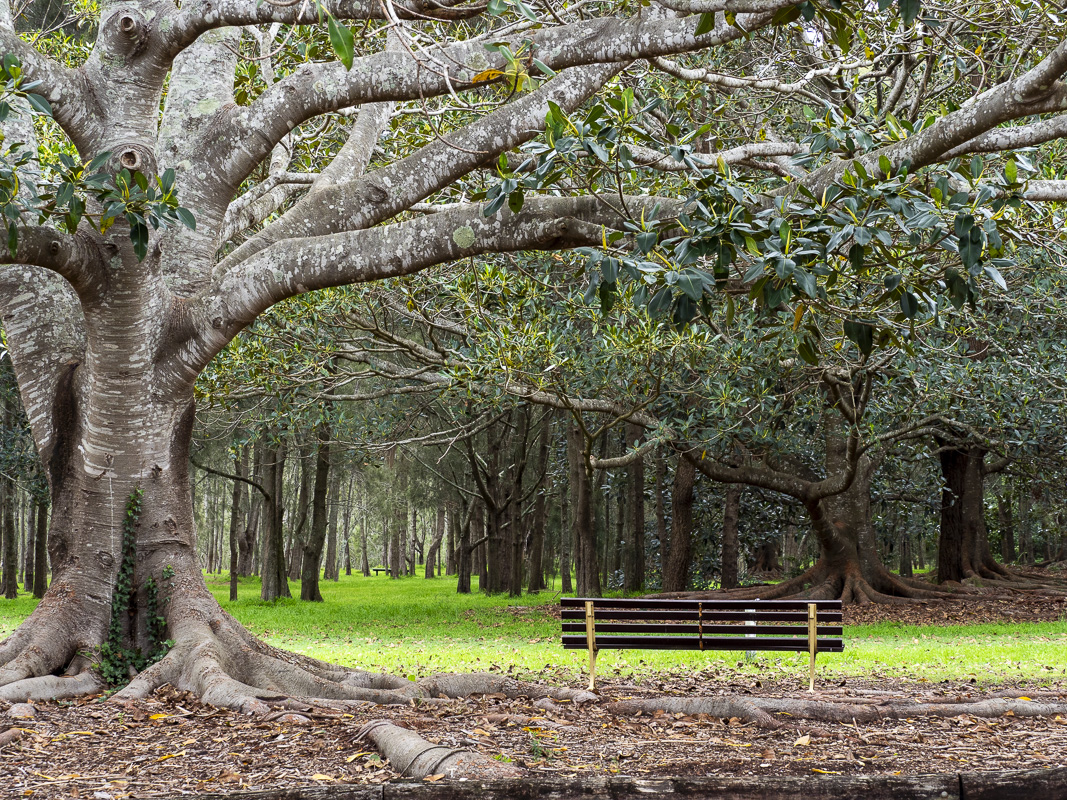
How to design these garden spaces
Traditionally these spaces are created using a combination of paving lawn, shrubs and trees with screening around the edges. In native gardens, particularly those aiming for a naturalistic garden, this requires a different approach. In formal native gardens, the traditional approaches still apply.
Designing open spaces without lawn
We can achieve the feel of open spaces without lawns (or by reducing lawns).

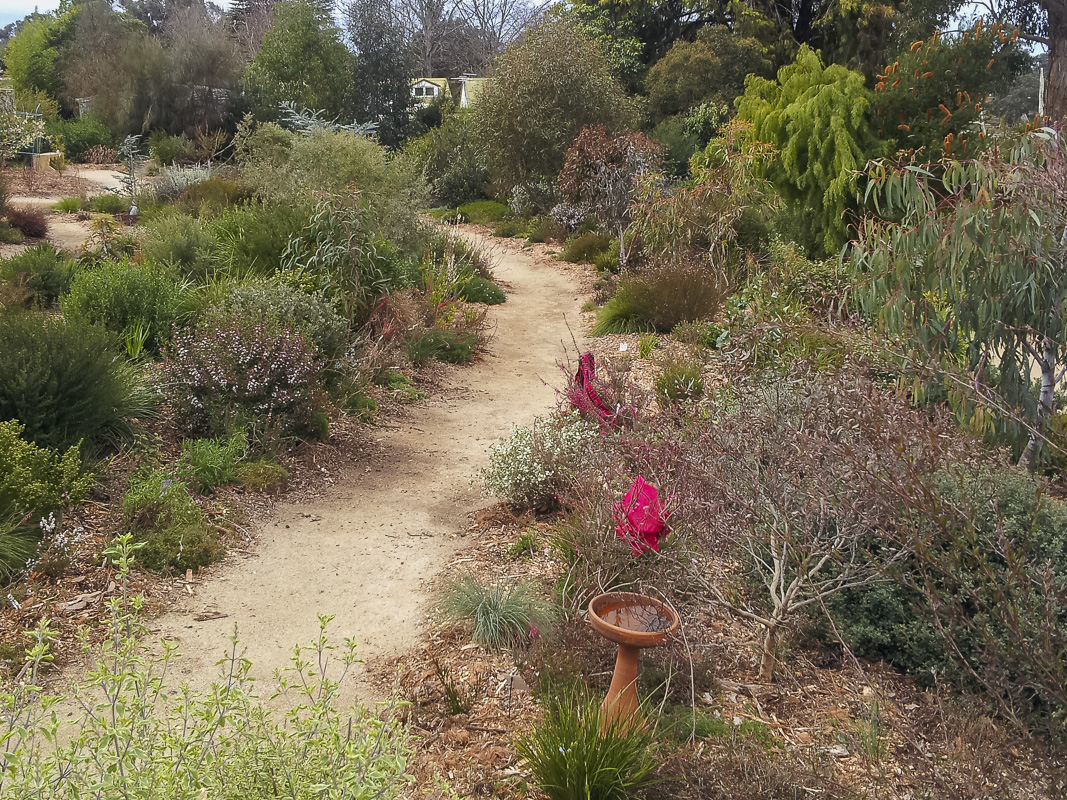
Planting low growing native shrubs creates a feeling of open space supported by meandering walkways. This retains the spacious feeling but gives a bush feeling and means there is not have much lawn to mow.
Small areas of lawn allow people to flow around the garden and of course, there is the cricket to consider and kid’s playing areas. You can soften any lawn you add by planting shrubs and ground covers around the edges.
Widely spacing larger shrubs creates spaciousness, leaving vistas between them as achieved in the Australian National Botanic Gardens and other native gardens.
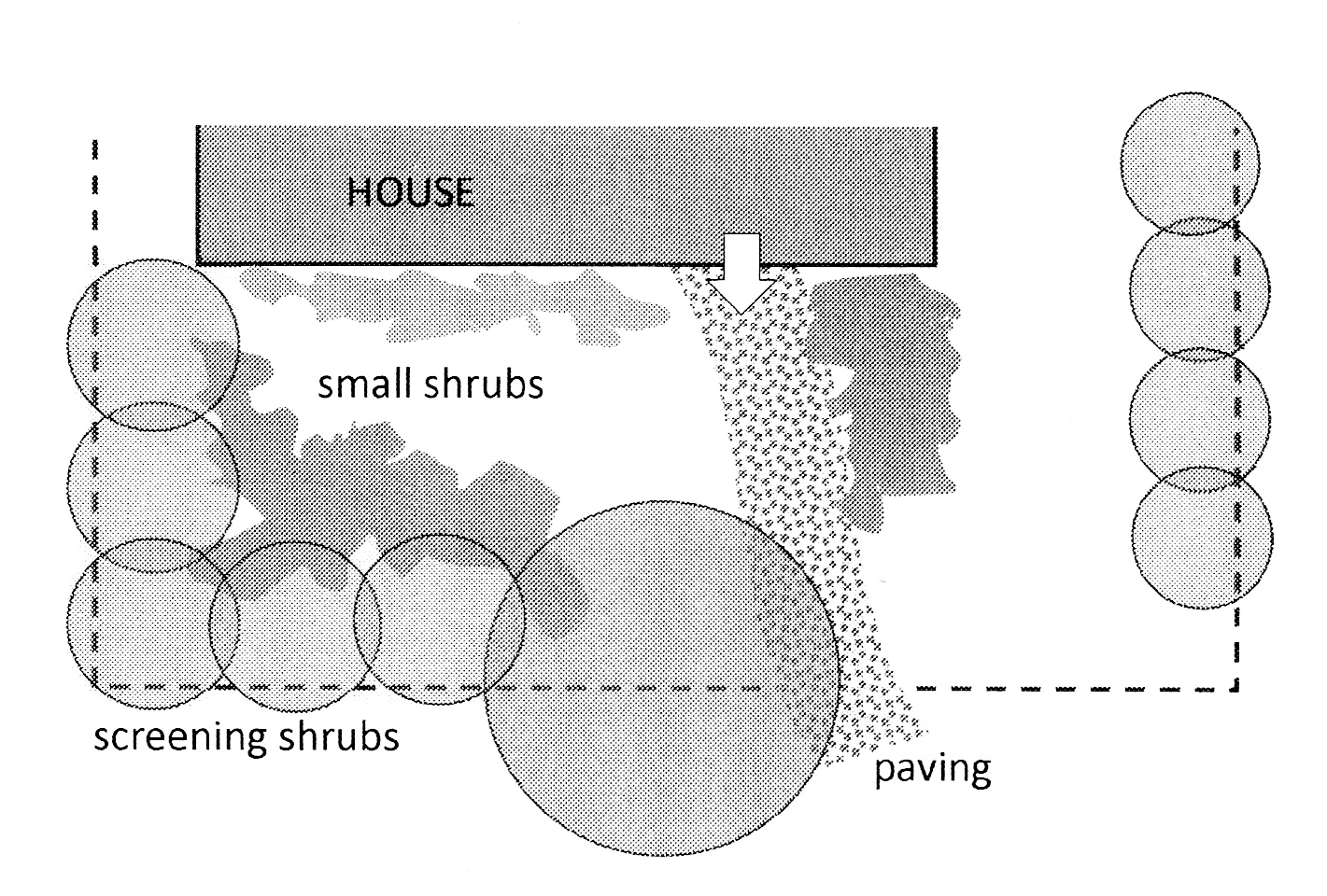
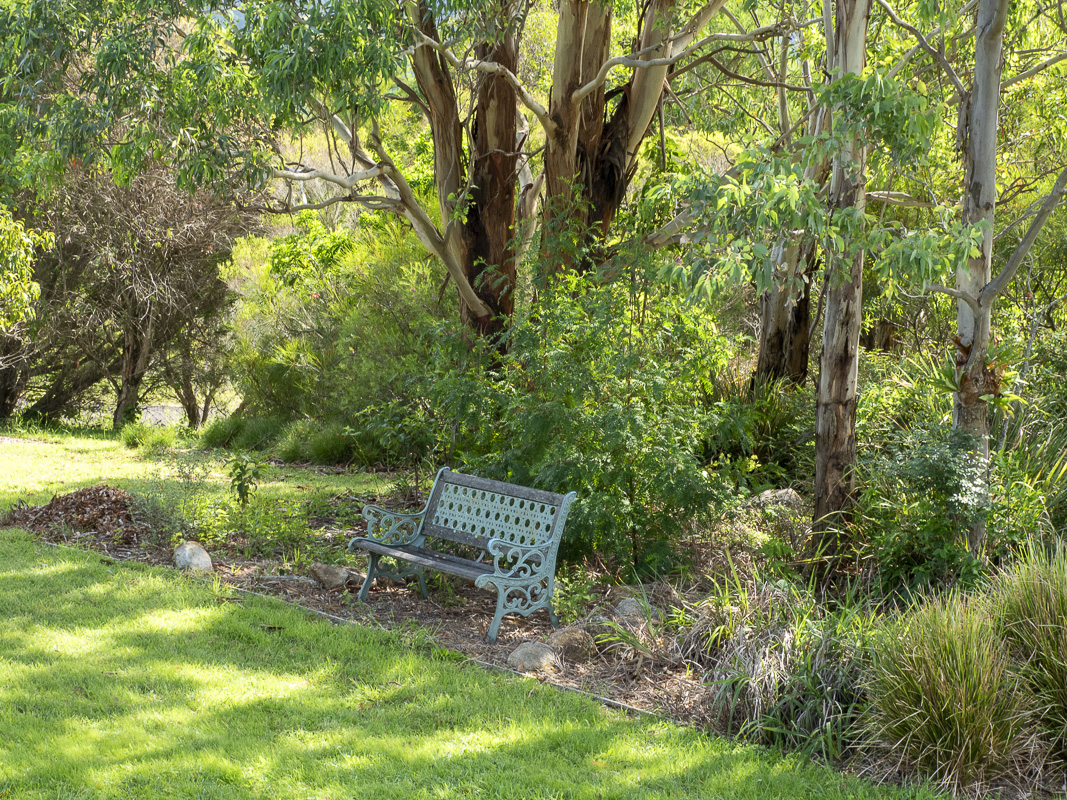
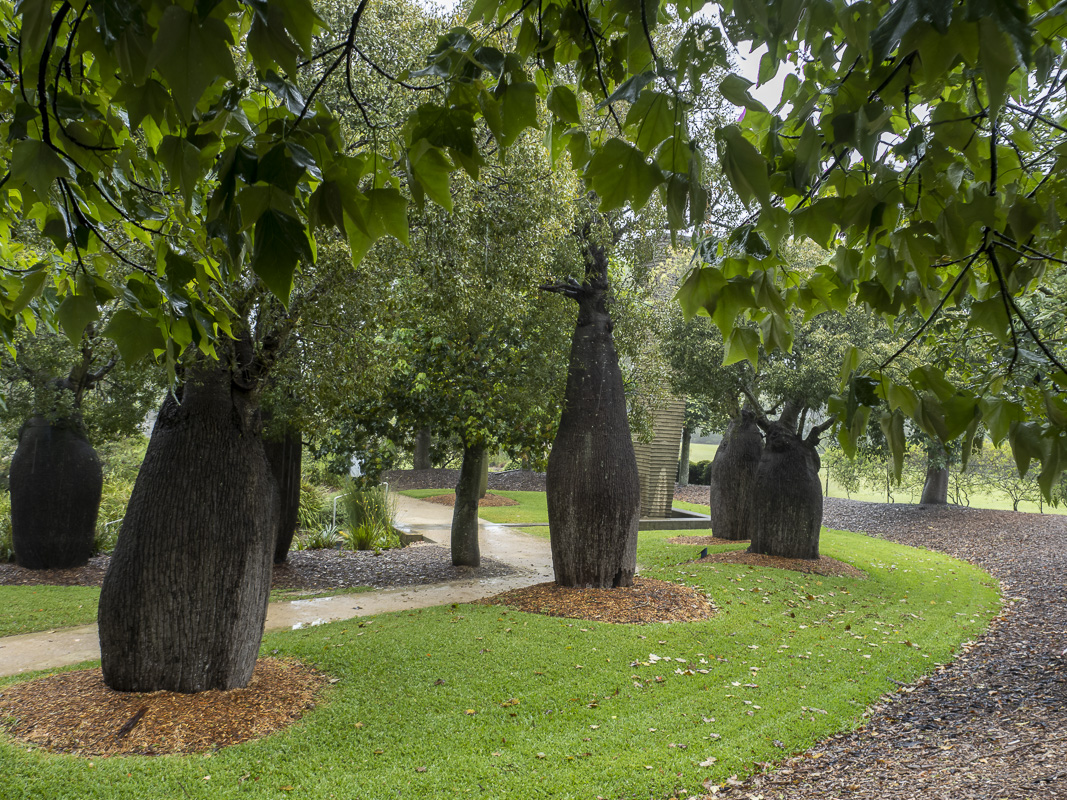
Designing spaces to draw people outside
Ideally, we combine spaces to create an attractive outdoor living space that draws people outside to relax.
Factors like sunlight, aspect of the house as well as aesthetics determine where different spaces around the garden will work. If possible, place sitting areas away from the house to encourage venturing out into the garden. This also means the garden can be closer to the house and improves the view from the house bringing birds and insects closer to the house.
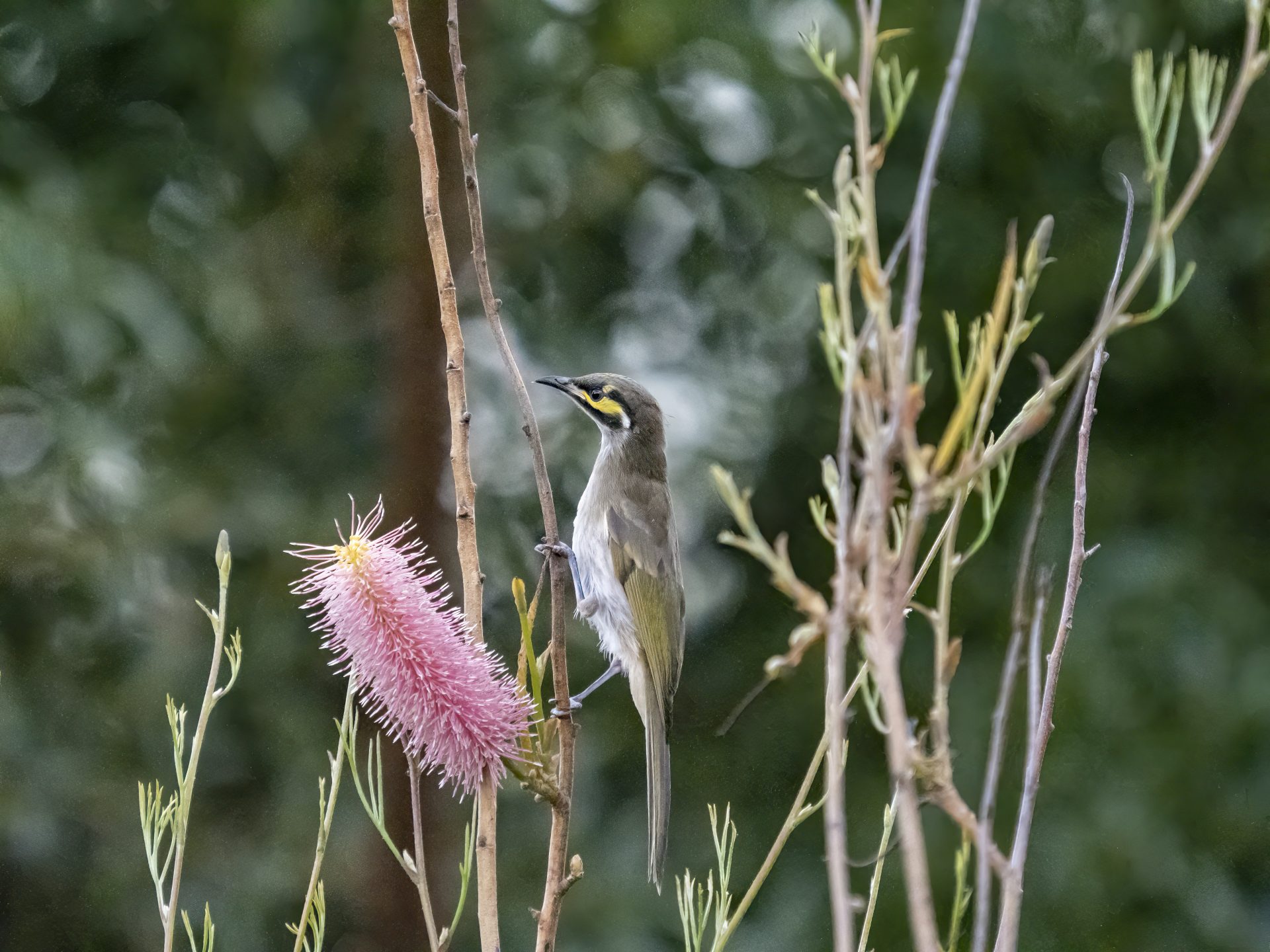

Place woodland areas to give a maximum feeling of spaciousness and tall shrub areas to screen and give a feeling of intimacy. Place trees to give protection from the sun and for aesthetics.

Designing spaces from all angles
Look at the garden from many different angles before deciding where things go and where the spaces work best. Avoid having the tool shed or garage as the main view!
- From the garden – Have you screened everything that needs screening? Have you decided on the look that you want to achieve in the garden? Have you left the views and vistas unscreened?
- When in the kitchen – One can spend a lot of time in the kitchen so why not have a lovely scene or vista from the kitchen window? A bird bath can provide a focus and interest away from the dishes.
- When in the lounge room – One can have an expansive or wide open vista looking out onto the best features and most restful part of the garden.
- Other rooms – What views do you want to achieve from them?
- From the street – Step back over the street to decide what you want to achieve in the front and what suits your house.
Addressing problem spaces
Narrow Spaces
These are often the worst-handled spaces in gardens. The most important thing is the placement of paths and driveways so that the spaces beside them are not too narrow. The front path one metre from the house that slowly gets over-crowded with bushes is a common problem. Here is how to design for narrow spaces in your native garden.

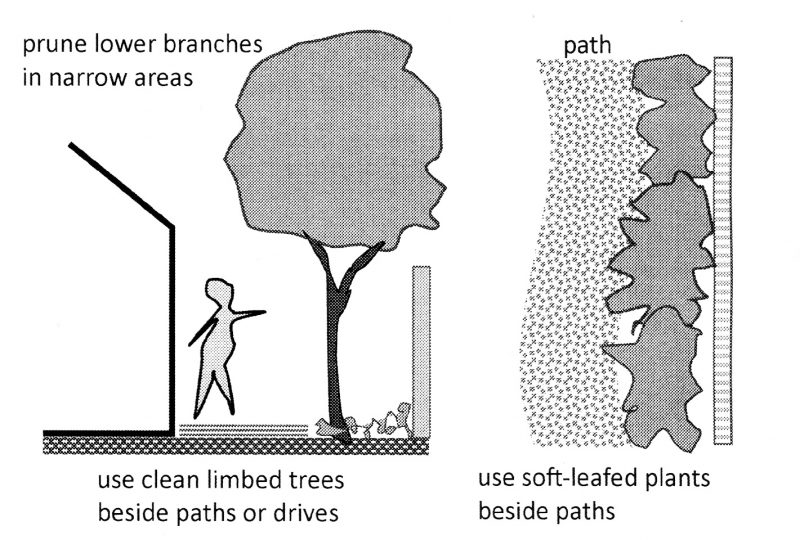
Also the driveway with bushes that scrape the car and leave little room is common. Good planning and proper selection of bushes or trees solves these problems.
You can use trees to good effect in some narrow spaces by cutting off lower limbs and allowing the canopy to cover the drive or path.
Adapted from an article which appeared in Australian Plants online in March 1998, updated and images by Heather Miles, sketches by Lawrie Smith
 Australian Native Plants Society (Australia)
Australian Native Plants Society (Australia)